Collaborating to Develop Mathematical Ideas: Series Overview Transcript
GFX:
Tch
Teaching Channel
+++ 00:00:04 +++
Student: You split it in half like this, and then you go three, six, nine, twelve.
Teacher: How did you know that two went into each box?
Student: Added them all together and there was ten, and then I divided 20 by ten.
Teacher: I really am happy that we get to come together, talk about student work. I'm really kind of looking at where we're going in our own math knowledge and where we go from here.
Teacher: Whenever you have people who are all able to focus on the same thing at the same time, then amazing things happen between people, and that's what education's all about.
Card:
Illustrative Mathematics:
A Series Overview.
+++ 00:00:40 +++
Teacher: Okay, so we're going to work this afternoon on planning a lesson to implement modeling tasks for the purpose of teaching content in your courses.
Ellen Whitesides: Well, illustrative mathematics is a community of educators that are dedicated to the coherent learning of mathematics.
Lower Third:
Ellen Whitesides
V.P., Business Development
Illustrative Mathematics
+++ 00:00:56 +++
Ellen Whitesides: We started with trying to illustrate standards with tasks and we have a lot of published tasks on our website. We work on professional development. We develop and facilitate professional development, but we also spend a lot of time thinking about how professional development could be different than it is now, how it could be more sustained, how it could really change how teachers think about mathematics and change the way mathematics is taught for our students.
Teacher: Let's talk about our learning target for today. We can solve real world problems involving fractions. Notice, I haven't told you if it's addition, subtraction, multiplication or division. That's part of the learning today, okay?
+++ 00:01:36 +++
Ellen Whitesides: We work with assessment consortium, Smarter Balanced, in a number of different projects. This project specifically is focused on tracing a small idea of mathematics through all of the steps that it goes through, how it's made into tasks and how those tasks are used in professional development of teachers, but also how those tasks are incorporated into lesson plans and how those lessons fit into the bigger units that teachers teach throughout the year and how they're worked into assessment as well.
Card:
Mathematical Ideas
Tasks
Professional Development
Lessons
Units
Assessments
+++ 00:02:07 +++
Ellen Whitesides: And we're looking at that at three different grade bands. I think that the most important thing is the collaboration between teachers, mathematicians, math educators around the country, because each of those groups bring different perspectives to the work and different expertise to the work, and all of those voices are very important voices to be heard.
Card:
Mount Erie Elementary
Anacortes, Washington
+++ 00:02:30 +++
Teacher: I would like you to work as a table to come to a final solution that everyone agrees with.
Student: I wanted to turn it and try it that the one that she had left of the one-fourth into a third.
Lower Third:
Jody Guarino
Project Lead Elementary School
Smarter Balanced Digital Library for Illustrative Mathematics
+++ 00:02:42 +++
Jody Guarino: The series is supposed to kind of paint a picture of taking an idea, and for my particular group, we're working with multiplication of fractions at the elementary level. So looking at, how does this idea develop over time, and how we can support students in developing this.
Card:
TASK:
Multiplication of Fractions
+++ 00:02:56 +++
Jody Guarino: But also supporting teachers to look at student work and think, "Well, what does this work tell me? What do I know about the student? What would be a next step in development?" What are common misconceptions that we can anticipate and predict and thinking about, how can we strategically address those things for students?
+++ 00:03:13 +++
Student: I found something up here that says, one-half of $12, so I knew that one-third cost Miss Farmer $13. So that's how I knew.
Student: That could be one-twelfth. Because if you void this, you need one more, because it says, one-fourth of the--
Student: Yeah, yeah.
Student: And then you got-- you would cross off all of it.
Student: Yeah, because that.
Student: Okay, no. Okay.
+++ 00:03:40 +++
Jody Guarino: One of the things that we have done is, one of our teachers in Delaware taught a lesson in her classroom, uploaded it to Teaching Channel teams and then we've all been able to collaborate around that video, so we can go in and make annotated comments. That's been really exciting, from the person watching the video and thinking, "Well, why did the student do that? What might that tell me about his understanding?" And then to have the classroom teacher actually go back into the clip and say, "Oh, you know what happened after we started filming was this," or, "I was able to build on that understanding in this way."
+++ 00:04:12 +++
Student: If you had $12 and there's 12 pieces, there would be one in each one. So we got one, so we did 12 divided by 12 equal one.
Jody Guarino: That lesson was taught again by a teacher in Washington, and so we made a lot of revisions to the lesson, based on what happened in Delaware.
Teacher: That's awesome.
Card:
Enumclaw Middle School
Enumclaw, Washington
Student: I get what you're saying, but I think it should be three sticks of ten red and then two sticks of ten blue.
Lower Third:
Eileen Goodspeed
Project Lead Middle School
Smarter Balanced Digital Library for Illustrative Mathematics
+++ 00:04:35 +++
Eileen Goodspeed: A group of middle school teachers came together and our goal is to develop a digital library. So we started at the end of the summer by creating tasks around the ratio and proportion standards.
Card:
TASK:
Ratios & Proportional Relationships
Teacher: Perfect purple paint is made by taking two cups of blue paint and putting it together, and taking three cups of red paint and putting it together. That makes one batch of perfect purple paint.
+++ 00:05:07 +++
Eileen Goodspeed: It is essential that we look at student work because we want to look at the variety of strategies that students use when they're solving a problem and to really get inside a student's head and understand their thinking.
Card:
ASSESSMENT:
Ratios & Proportional Relationships
Teacher: You'll see the beginning of the tape diagram and then you see it growing and growing into 20 cups.
Teacher: So that connects, I think, to this student who said, "Why would I-- all the other kids were using 20 blocks." And he said, "Why would I use 20 blocks? I'll just create a key, and this key will say one block equals four." And so naturally, right, he was creating this tape diagram, but he was just trying to really look for a simple way to show his thinking.
+++ 00:05:44 +++
Eileen Goodspeed: Any conversation among teachers about math tasks and about their students is going to end up in improving their instruction and ultimately, students benefit from that.
Teacher: So it seems like in all of this, that if we don't really kind of get messy with the math ourselves, that it's really hard for us to come back and look at student work. So some way or another, we have to have the opportunity to really do these problems first a bit, learn all the different strategies as learners, before we come back as teachers.
Lower Third:
Shelbi Cole
Deputy Director of Content
Smarter Balanced Assessment Consortium
+++ 00:06:18 +++
Shelbi Cole: Looking at how teachers learn together, how that translates into the implementation of a lesson, how teachers can reflect on that lesson, talk about what students did and how they might move them, that's the formative assessment piece. Taking all of that together and putting it into a coherent package and saying, we have to show the power of that collaboration.
Teacher: Let's look at another single day and then let's look at the whole project.
Card:
High School Math
Professional Development Training
Sonoma State University, Rohnert Park, CA
Teacher: Okay, yeah, we can do that.
Teacher: Who measures that?
Teacher: Who measures it, how is it measured, and how do I find out?
+++ 00:06:48 +++
Brigitte Lahme: Like any profession, in mathematics in particular, you learn something all the time.
Lower Third:
Brigitte Lahme
Project Lead High School
Smarter Balanced Digital Library for Illustrative Mathematics
Brigitte Lahme: Professional development just gives them a chance to be a professional by learning together with colleagues, learning new material, thinking deeply about what their goals are.
Jon Southam: I think the videos of the vases and the volume, the height.
Krista McAtee: Height over volume. Height over--
Jon Southam: Let's look at it one more time. Volume over height.
Krista McAtee: Yeah, sorry.
+++ 00:07:20 +++
Shelbi Cole: To learn mathematics deeply and to have the kinds of knowledge that you need to know to teach it well to students, a lot of that happens through conversations about, well, what do you think students will do? And often, things that you just don't think about if you're planning in isolation or implementing in isolation, or reflecting in isolation, all those things are drastically improved when you get to sit down with your peers and collaborate.
Jon Southam: Here we have the task to create a task around modeling functions, right.
+++ 00:07:53 +++
Brigitte Lahme: Well, yes, so the standard, the FIF B4.
Jon Southam: It hits that standard.
Brigitte Lahme: That hits that standard.
Lower Third:
Jon Southam
High School Math Teacher
Sonoma Valley High School, Sonoma, CA
Jon Southam: So I came to the professional development today because I knew I would have time to plan with two of my colleagues, plan a lesson that we would actually be able to implement in our classroom. And we were able to take what we were going to learn today and do something with it.
Lower Third:
Krista McAtee
High School Math Teacher
Sonoma Valley High School, Sonoma, CA
+++ 00:08:15 +++
Krista McAtee: I was able to learn from my colleagues, "Oh, here's how you do this, and let's try this," and we created something better. We have a lesson that we can walk away with that's much more powerful.
Card:
TASK:
Mathematical Modeling
Krista McAtee: Now on this piece of paper that you have there, I would like for you to draw what you would-- and this is just a sketch-- what you think that this graph would look like.
+++ 00:08:39 +++
Jody Guarino: I think this video series can really support teachers in learning to learn from their teaching. So to think about what are some things I need to think about before I'm teaching this particular concept, during and after? What can I learn from my students? What is the standard actually calling for? What kinds of understandings? This is all around formative assessment, so thinking about, what can I learn about my students today that I can use in my lesson today as I'm teaching? What can I learn from them today that's going to inform my work tomorrow? And I think that's what this is all about,
+++ 00:09:12 +++
really supporting teachers to learn with their students, from their students and use that learning to guide the work that they're doing with their students to make sure we're all learning from this.
GFX:
Tch
Teaching Channel
#### End of C0804_001009_Overview_FINE_SD.mp4 ####

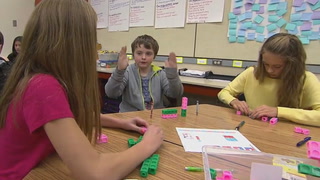
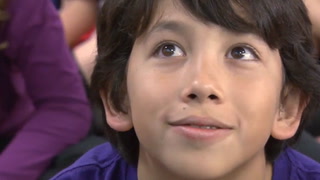
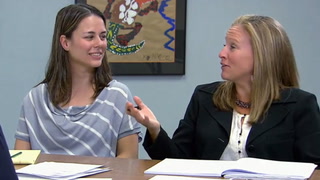


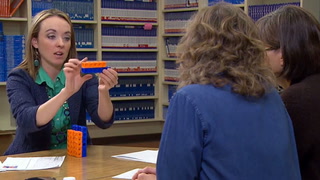
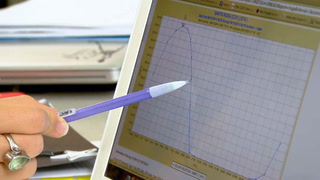
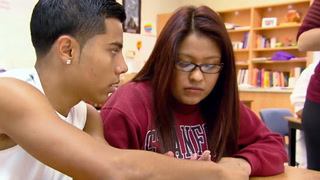
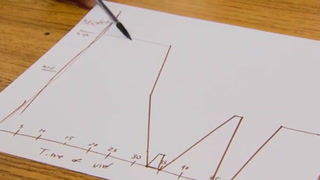
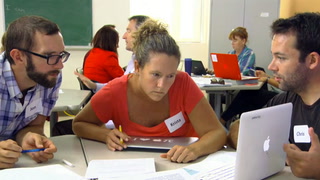








9 Comments
Allison Kintner Jul 17, 2020 12:37pm
They view a lesson that a teacher recorded and make comments on the video, then the teacher answers questions that teachers may have while watching the video.
2. Why do the teachers pay special attention to student misconceptions?
They look at students work and figure out what the student has done and what they can do to help the student
3. What are the benefits of virtual collaboration?
The teacher can go back and answer questions that teachers may have.
Hisyam Hidayatullah Apr 7, 2016 5:08am
joanna aranda Nov 4, 2015 10:01am
Crystal Morey Aug 25, 2015 9:53pm
Ursula Ragland Aug 25, 2015 2:08pm